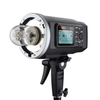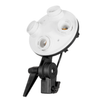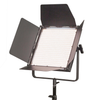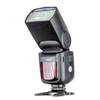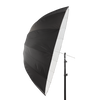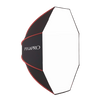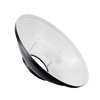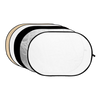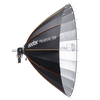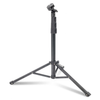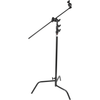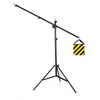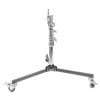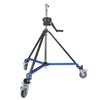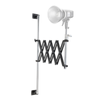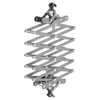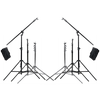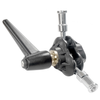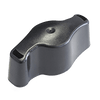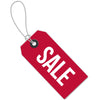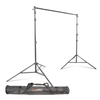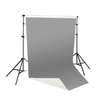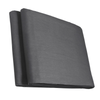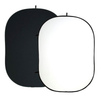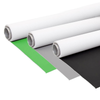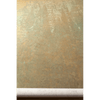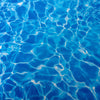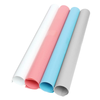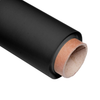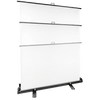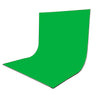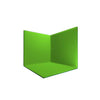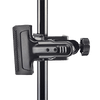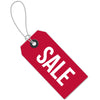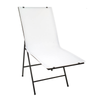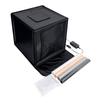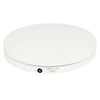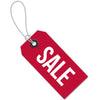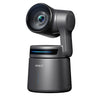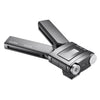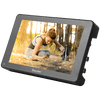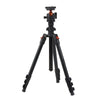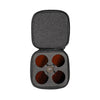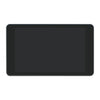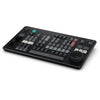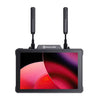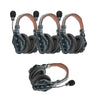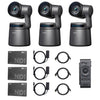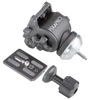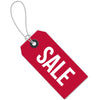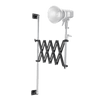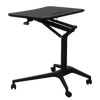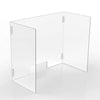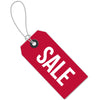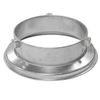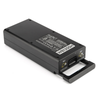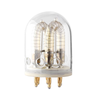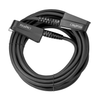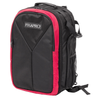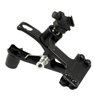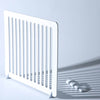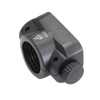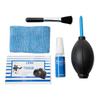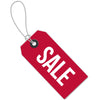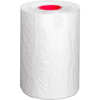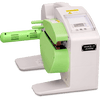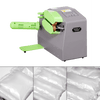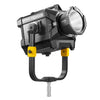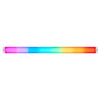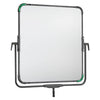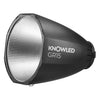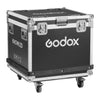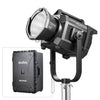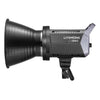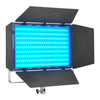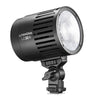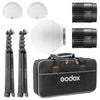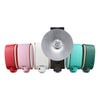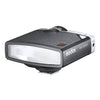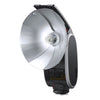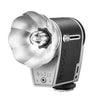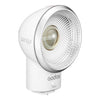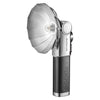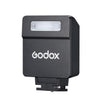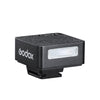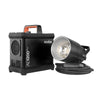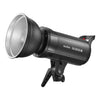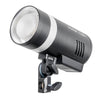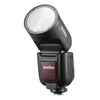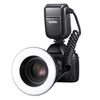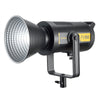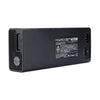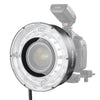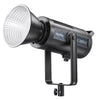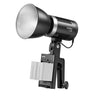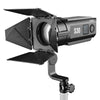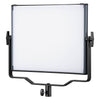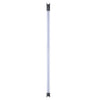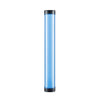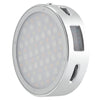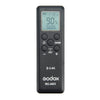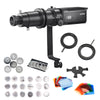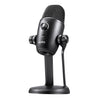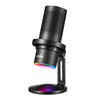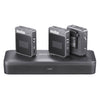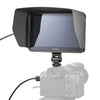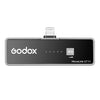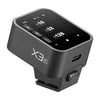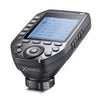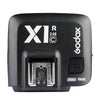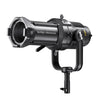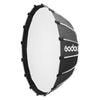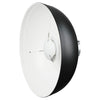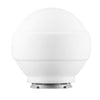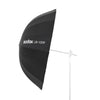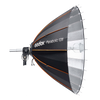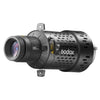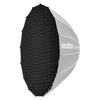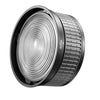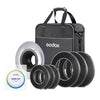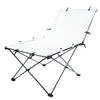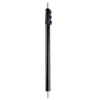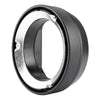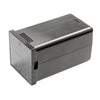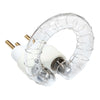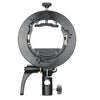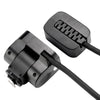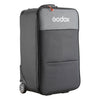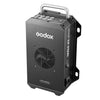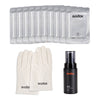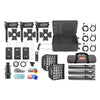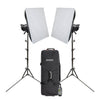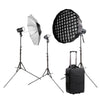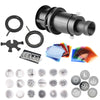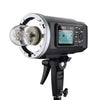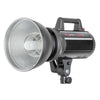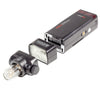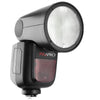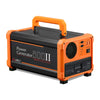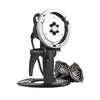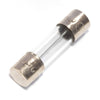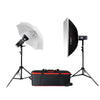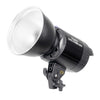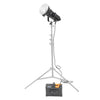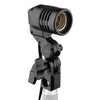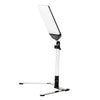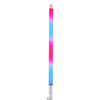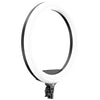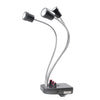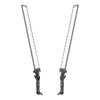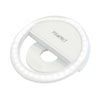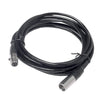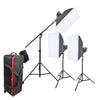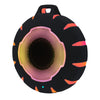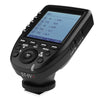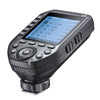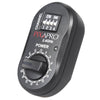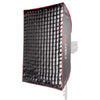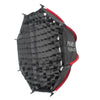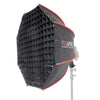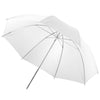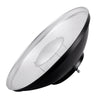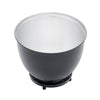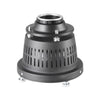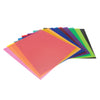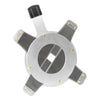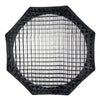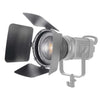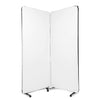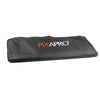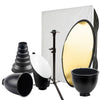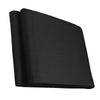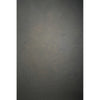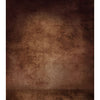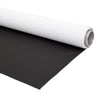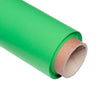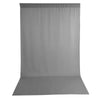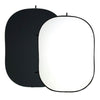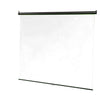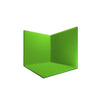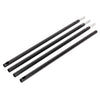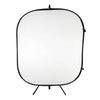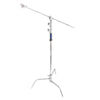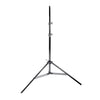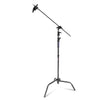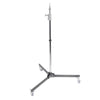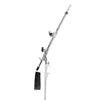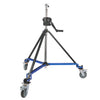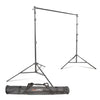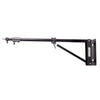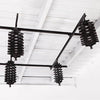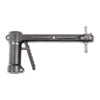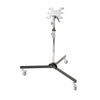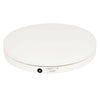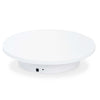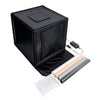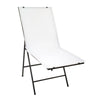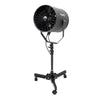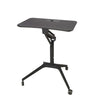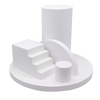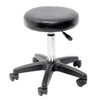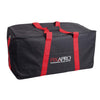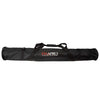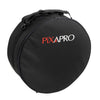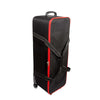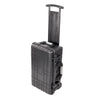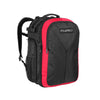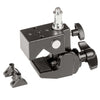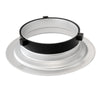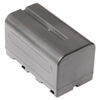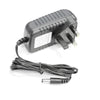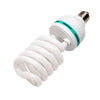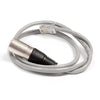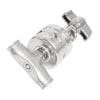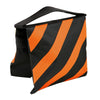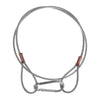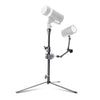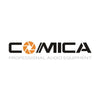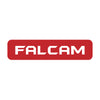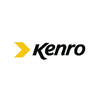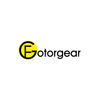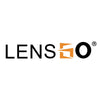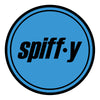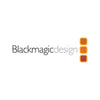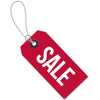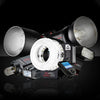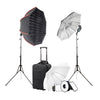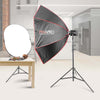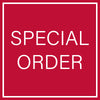Jake Hicks - TL30 RGB Tube K2 Kit Review
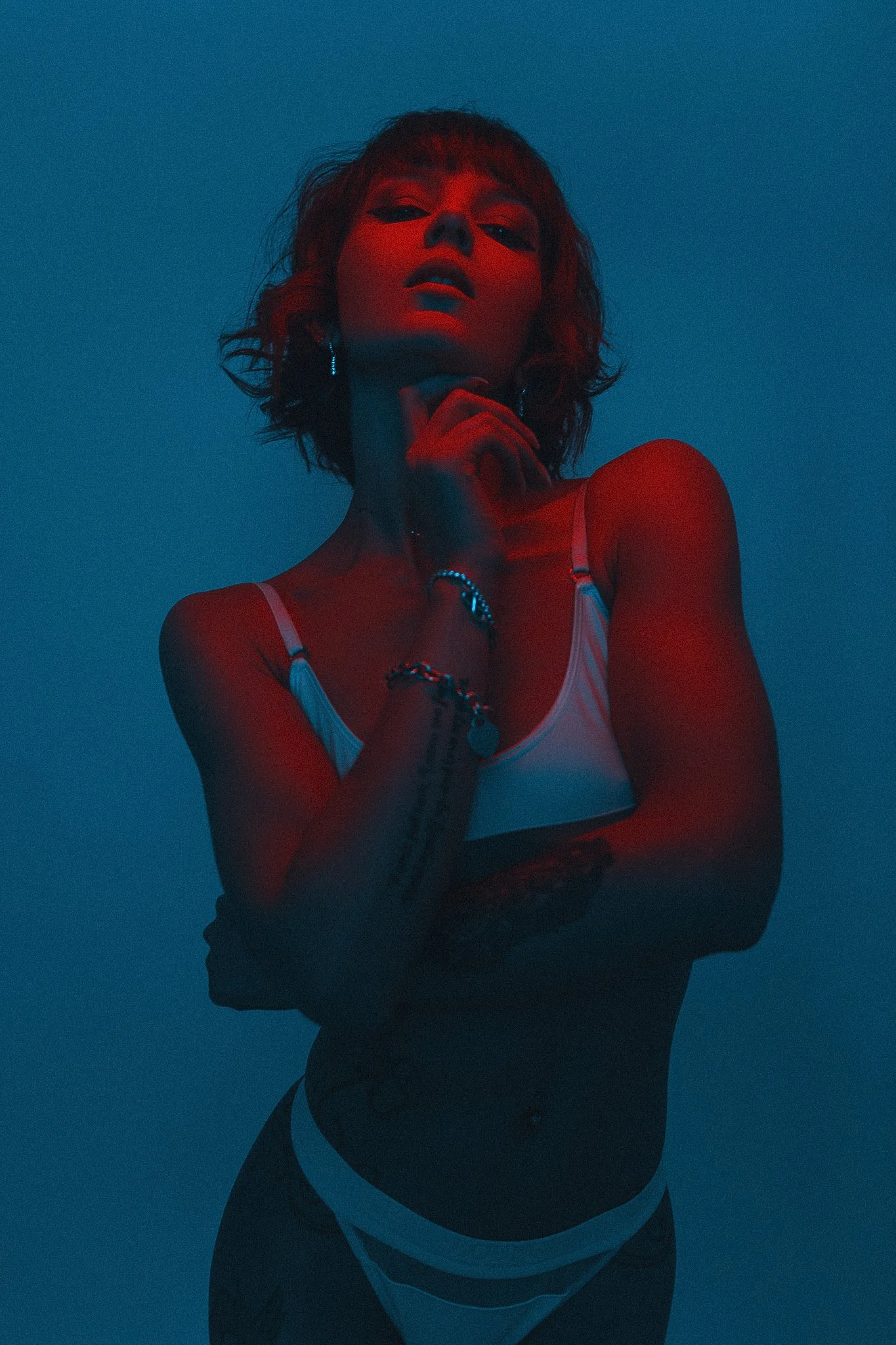
The little TL30 LED can be brought in unbelievably close to the subject and can result in some gorgeous light drop-off, even in tiny spaces!
To clear up any disclaimers right out of the gate, I reached out to Essential Photo here in the U.K. and requested this product to test and play with. As I normally do with these products, I offer to talk about it and share my thoughts, but once I’m done, I’ll send it back. So to be clear, I am not being paid to write this.
The reason I requested this little light in the first place, was to test some theories on light drop-off, specifically with LEDs in this case. I know long-time readers will have heard me mention this a few times over the years, but using LED lights (specifically panels and tubes) is very different when compared to strobes.
Real groundbreaking thinking so far, right? “Yes, Jake, strobes and LEDs are completely different. We get it!” But no, I’m not talking about flash durations or power outputs, I’m referring to light spread and light drop-off and why this is so fundamentally important for us to fully understand where it differs with different lights.
LED Lights and Their Unique Light Drop-Off
I have already spoken about this LED light drop-off at length in the past, so I won’t bore you with the details once again, but if you’re interested you can take a look at my previous article on it here Lighting Setup: Affordable LED Tubes
The main point I want us to be mindful of as we look at these little TL30-K2’s (catchy right?), is that they’ll enable us to throw light onto a very small area without it spreading to unwanted areas like the background. You can see more of what I mean from the diagram below which shows the drop-off of LED light from tubes versus the drop-off of a single point strobe.

On the left, we have a single point of light from a flash and on the right we have an LED tube. The brightness is measured to be the same at 50cm from the source at f5.6, but you’ll see that this drops off differently between the two light sources.
It doesn’t take a genius to see that the tube is spreading light far more evenly over a larger area here, granted the tube pictured above is far larger than the 30cm one I’ll be testing, but that smaller size will actually work in our favour in this instance as we’ll be able to control a very even spread of light in a very small area, namely the body.
Before we start nerding-out about lighting theory though, let’s first look at the lights I’ll be testing.
What are these TL30-K2 LED tubes exactly?
The TL30 refers to Tube Light and that it’s 30cm in length. The K2 part refers to the fact that it’s a 2-light Kit. The individual tubes are 30cm long and are capable of producing colours from the full RGB spectrum as well as white light ranging from 2700K to 6500K. They weigh in at only 0.30Kg and have a battery duration of 60 minutes at full power.
I opted to get the 2 light kit so I could play with mixing colours, plus this kit comes with a ton of additional accessories that certainly enable you to get the most from these lights in almost any situation… including underwater!!!



What Accessories are Included in the Two-Light-Kit?

Click to enlarge: Tube Clamp
Tube Clamp (TL-C2 Retaining Clips)
One of the most important accessories is the tube clamp. This clamp sits snuggly on any part of the tube before you firmly secure it in place. On the rear, you then have 2x 1/4 inch thread holes to easily mount the tube to a variety of light-stands, clamps and tripods.
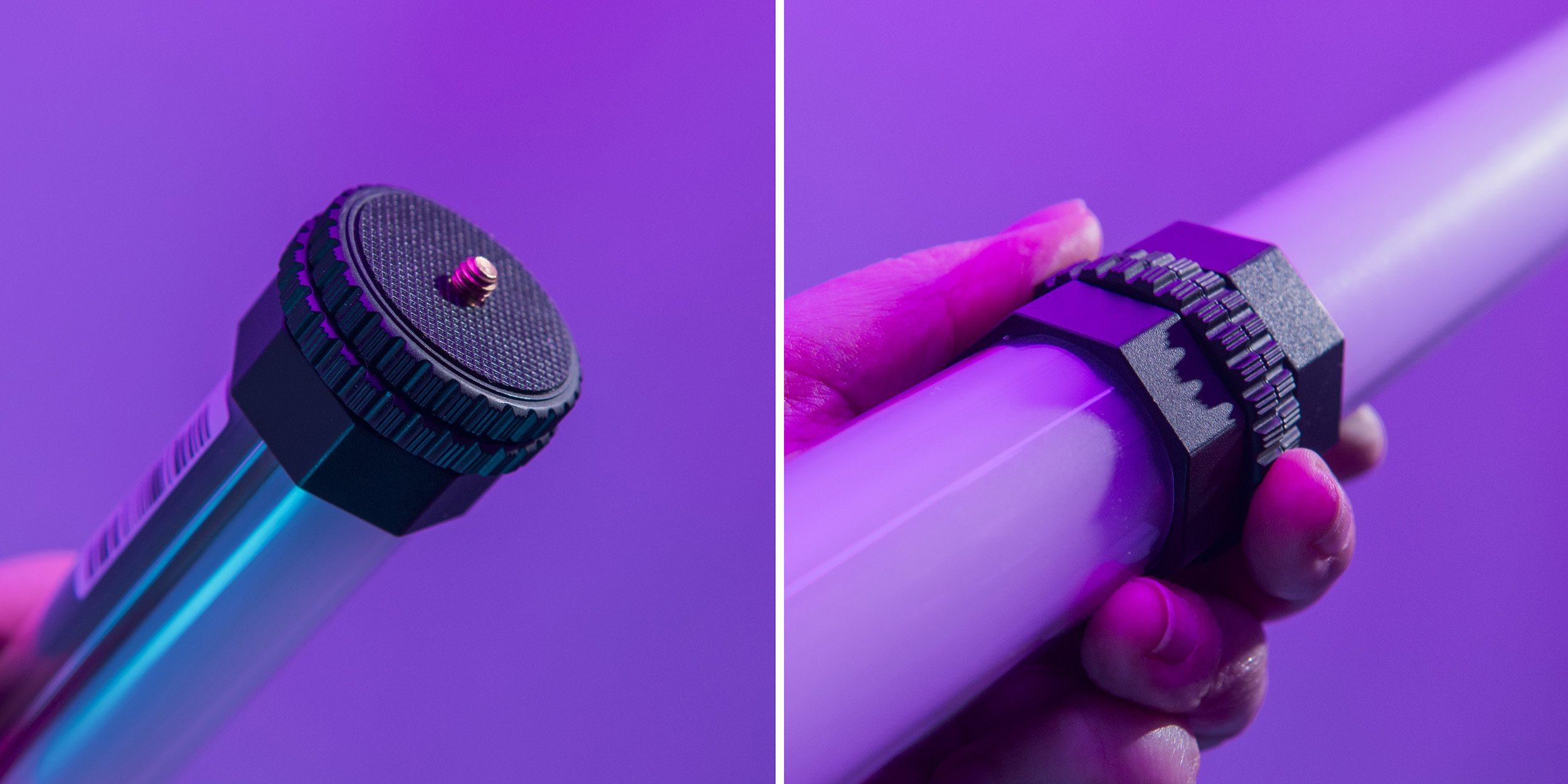
Tube Extender (TL-M2 Coupler)
Each of the LED tubes has a 1/4 inch hole in each end that allows for the tubes to be connected to one another to effectively extend their length. Each tube can be connected via this two-disc thread that sits between them. Each of these discs moves independently meaning you can screw the tubes together firmly and align them to the correct position very easily.


Tube Grids (TL-G30 Grids)
These grids are attached via three elastic straps that enable them to be secured snuggly to the LED tubes. A little fiddly to put on and I usually just skip the middle strap, but the grids do stay in place and don’t droop down once they’re positioned. They can also be used along with the tube clamps and although they don’t look pretty when in place, the clamp doesn’t hinder the grids from channelling the light in any way.

The tubes with the clamp and grids together. It looks ugly, but neither product stops the other from doing its intended job.

Waterproof Bags (TL-W30)
A nice bonus to have in this kit is the waterproof bags. I say it’s a ‘bonus’ as this won't be something a huge number of people will need, but I think it's great to have this included, even if it’s just to combat weatherproofing concerns. The bags seem fairly durable, but thin enough for you to easily use all of the buttons….. just not the dial! They also have an easy-to-use and firm closing mechanism, meaning there is no concerns when it comes to wondering if you’ve closed the bag properly or not. These waterproof bags are generous in size too, meaning you aren’t fighting to get the tubes in and out either. Again, I can’t see myself using them, but they’re certainly nice to have.

Additional bits…
The kit also includes a few extra bits including wrist straps that screw into the ends of the tubes and of course, the USB to USB-C charging cables. You charge the lights via a USB-C port in the base of each of the tubes (pictured above). Lastly, you also get 6 metal plates. I’m not entirely sure how often, if ever I’d use these, but they are designed to be stuck onto surfaces via their adhesive pads and then the LEDs are supposed to be attached to them via their internal magnets. I will just add that these magnets in the tubes are surprisingly strong and they have no trouble at all when it comes to holding themselves both vertically and horizontally to any metal surface. Not a mandatory feature, but I could see it being useful in more places than you think. Edit: I just tested it and they even stick themselves to my C-Stand upright and even on the thinner boom arm too. Like I say, these magnets are pretty strong!
Controlling and Adjusting the Tubes

You’ll be very pleased to know that these lights are very simple to control, plus you won't have to go through numerous menus to get to where you want to be. Each tube has 3 buttons; Power, Mod and Dim. Plus it also comes with a thumb wheel/adjustment dial. Hold the power button down to get going and then simply hit the MOD button to switch between each of the 3 white light, RGB and effects modes. From here you can then adjust each of the relevant values by turning the wheel and then adjust the brightness by first hitting the DIM button before again turning the wheel. Pressing the wheel in can also allow access to further adjustments.

As I mentioned, there are only 3 modes to cycle through so getting to where you want is very fast. The first image above shows the White Light mode and then above on the left is the RGB mode and on the right are all the video effects like lightening, TV flicker etc.
The Godox Light App
Don’t forget that these tubes all have Bluetooth connectivity too which enables you to control them via the Godox Light smartphone app. I personally don’t have the patience for controlling my lights via an app unless I have to, but the Godox Light app is supposed to be pretty good and if you’re using these lights up high or in hard-to-reach places, apps like this can make your life an awful lot easier!
….but how bright is it?!
Now I know all my strobe brothers and sisters are trawling this article looking for this little smattering of data that shows you how weak this latest LED light is. Well, here you go…
-
Power Output: 8w
-
Brightness: 740 lux
Super useful, right? I mentioned it at the top, but yes, LEDs are indeed very different when it comes to their outputs and you’ll often read power values that don’t translate well, if at all, to what we’re familiar with in our strobe world.
So instead of the tech-specs, let’s look at how bright this is in practical terms.

The above image was captured at f2.8 / ISO 200 / 1/60th sec
Above we can see a practical result in a language that we all understand. I measured the power of the light at 100% at a distance of 50cm, 100cm and 150cm away from the LED using a light meter and here are my findings.
At 50cm away the light measures f2.8 at ISO 200 and 1/60th sec. It drops off consistently from there and you can see that in the above photo.

I know we’re talking about power outputs in this section, but just look at how clean that light is on the wall!
At this stage, you may be surprised or even disappointed with what you’re seeing. After all, f2.8, ISO 200 and 1/60th sec at 50cm away is not bright, but remember, this is a tiny LED tube and we’ll be using it specifically as a key-light or at the very least, very close to the body. Every light has its optimum job and although this won't be lighting any big spaces on location, we can still utilise this tiny package to create some unique lighting styles.
Not convinced? Take a look below and see how I intend to use mine.
Using the TL30 to take portraits
If there’s one thing I’ve learned over the last couple of years while playing with LEDs, is to always test it out for yourself. With so many of these LED lights, it’s always the same concern; ‘will it be bright enough?’ You look at the spec sheet and many of them look like they’ll do nothing, but when you use them, you quickly find out that they’re far more capable than you initially thought and a lot of this comes from how they distribute light.
But enough specs and theory, let’s see the shots from my initial tests…




Click to enlarge: The initial test saw me connect two TL30s together via the included screw and use the now 60cm LED tube as a red key light.
The Initial Test
I started off by actually joining 2 of the TL30s together via the included screw attachment from the pack. I then used this now 60cm tube as my key-light and set it to pure red (Hue: 0 - Saturation: 100). I positioned it above the model and just out of shot so I could shoot underneath it. To complement this red light, I added a large blue light behind me via my Rotolight AEOS 2 Pro in a R120 softbox (AKA big soft light).
Camera Settings
-
Camera - Nikon D850
-
Lens - 24-70mm f2.8
-
Shutter Speed - 1/60th
-
Aperture - f2.8
-
ISO - 200
-
Kelvin - 5500K
-
Focal Length - ~40-58mm
Points of Note
The one thing I was keen to test with this light drop-off, was just how quickly the light would dissipate. What I mean by this, is how quickly the power of the light becomes effectively powerless and we can really start to see that here when we look at how close the model is to the background. Edit: I’m looking at the 3D diagram again now and in reality she may have been even closer to the background than is shown here. My point is, that the light from this very bold red key-light barely touches that background at all and it’s kept only on the model before it drops off entirely.
Looking Closer
To really demonstrate what I mean, I shot the same test image below with both a regular strobe with a basic reflector dish attached and then with the TL30. I made sure that the mannequin forehead was light metered at exactly f5.6 between each shot and both lights were positioned at the same distance from the subject too. What’s important for you to observe here, is just how much light is being spread/spilt onto the background behind the head. As you can see, the strobe spreads a lot of light back there, but the LED tube has almost none at all. You should also note just how similar the lighting between the two faces is here too.
It’s this incredibly tight light control that an evenly distributed light source like an LED tube or LED panel has that’s so important and it’s what I hoped to find when I requested this TL30-K2 lights to test.
Nerd-Note: I had to use a reflector dish on the strobe to try and make it a little fairer on the strobe. With no dish, the bare flash bulb threw light all over the studio and this resulted in the background being far brighter than it is here. Plus, due to the nature of lighting never happening in a vacuum, that bare bulb bounced light around the studio and ultimately that light filled in a lot of the shadows below too.
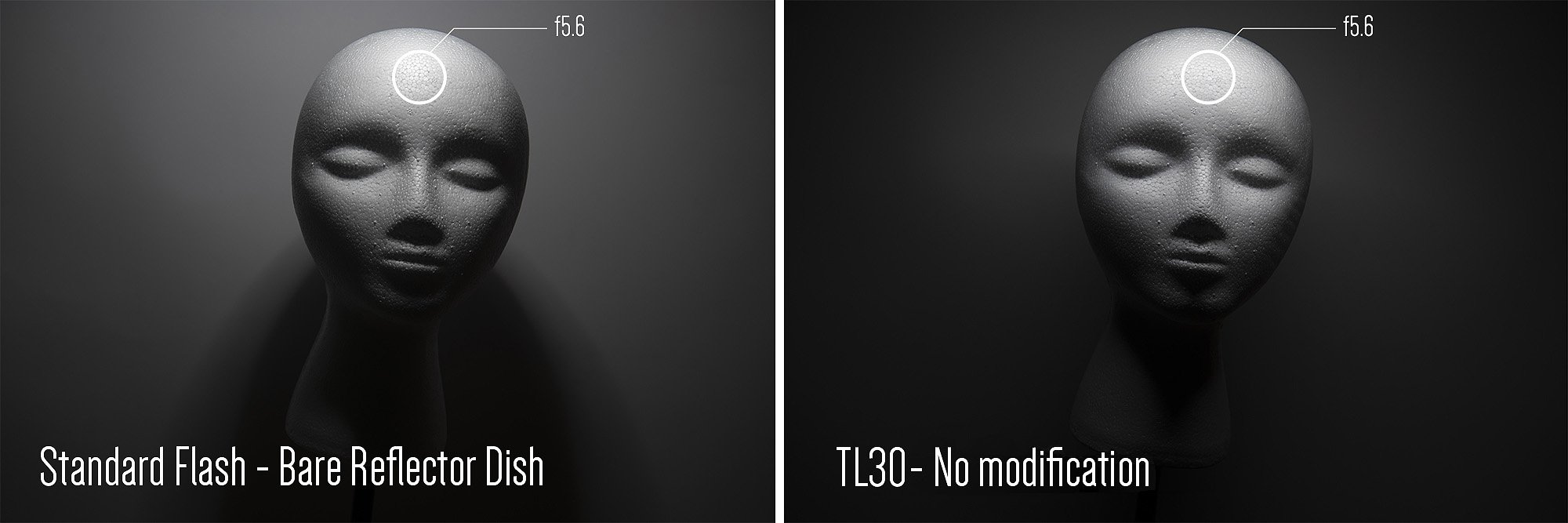
Click to enlarge: A practical light drop-off comparison between both a strobe and a small LED tube.
What about just one TL30?
I knew you were all just dying to ask that, and if I were you, I’d be dying to ask that exact same question!
Yes, the above shots were taken with 2x TL30s joined together and I did briefly test what just one of them solo looked like as a red key-light too.


This shot looks very similar to the earlier shots where I used 2 tubes joined together above, right? Yes, you’re not imagining things, the two resulting shots look very similar and that’s purely down to the size of the subject being clearly covered by one light when brought in close like this. So regardless of whether you only have one tube or two, you can still achieve the same look. The only core benefit of the two tubes is each of them will need be emitting slightly less light compared to one on its own.
The White-Light Alternative
I get it, not everyone is as obsessed with the crazy, bold colours as I am, so for the normies out there, here are some white-light alternatives.


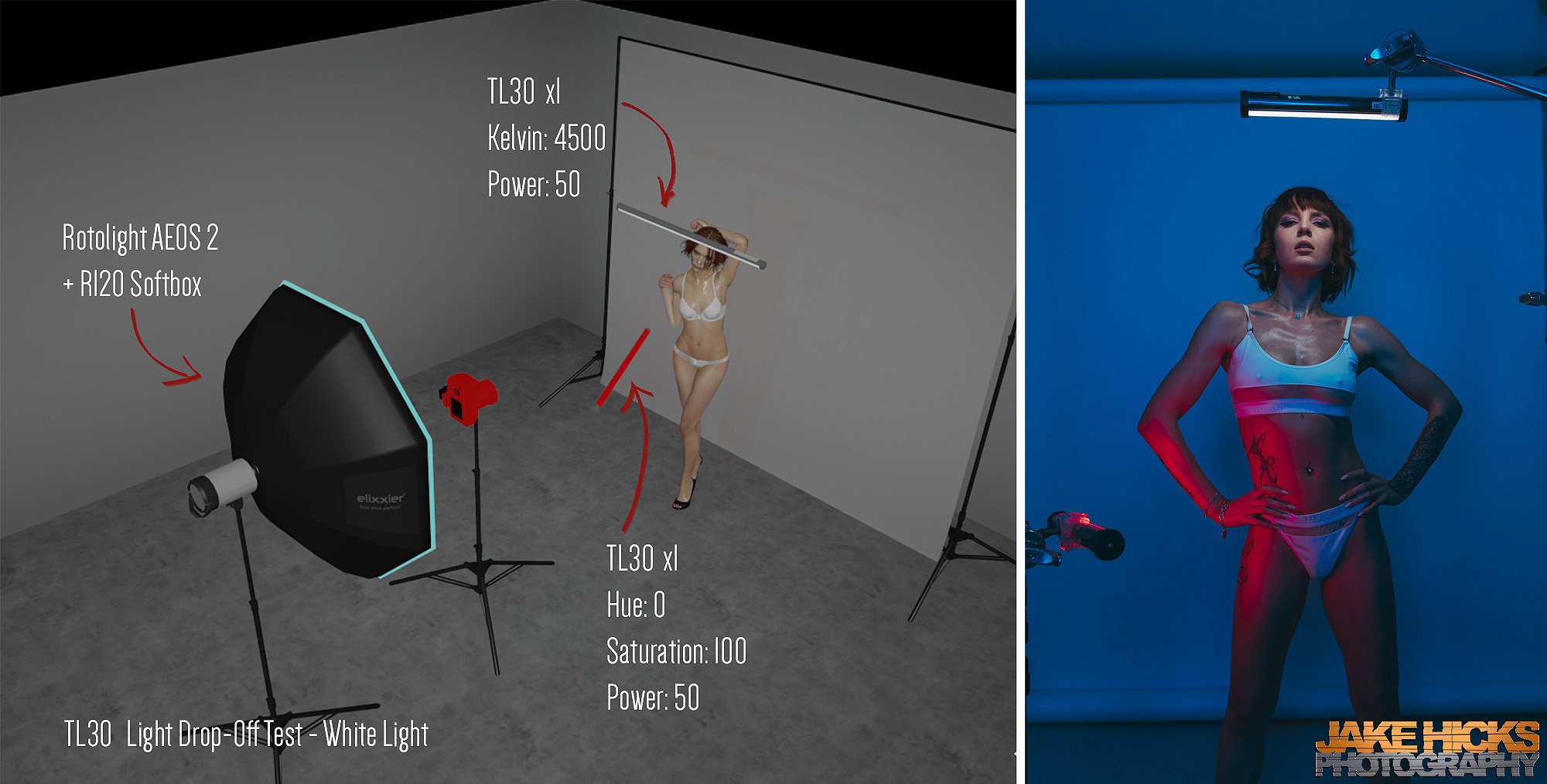
Click to enlarge: Here we can see that I’ve changed the key-light to white-light and that I’ve also added a second tube to camera left. Again, this is set to red.
Note: The Set.a.Light 3D software I use to make these diagrams currently doesn't support small LED tubes, hence why the diagram shows the longer versions.
For this set, I’ve changed the key-light above to white light (4500K) and then I’ve added a second TL30 to the side of the model and this is now set to red (Hue: 0 - Saturation: 100). For this one, I also decided to move her a little further away from the background due to the red light below needing to be pulled further back to remain out of shot.

Alternative Fill
Lastly, I simply switched the red fill-light to be in front of the model instead of to the side.
Again, here I moved the white light up a little higher to get more spread down the body. This also helps prevent any white light from spilling down onto the backdrop behind her which would in turn wash out the blue colour. To avoid this, I moved the model and all of the lights a little further away from it.

The power of this light, is its size!
Early on in this article, we spoke about its concerning power output. The specs told us it was an 8w light! If you’re a studio shooter, you’ve likely got some flashes that are 500w, maybe even 1000w! How can this 8w light even be usable?
I hope you’ll agree now that those 8ws can be deceiving. You’ve just seen a bunch of portraits all very well-lit and my camera settings weren’t anything too crazy to achieve them. Yes, I was at 1/60th at ISO 200, but don’t forget that the LED tube was also only set to 20 (out of 100) in terms of power. I do not doubt that if I’d been bothered by either the ISO 200 or 1/60th sec I could easily have given that little light more power.
But the beauty of this little light is not its versatility, far from it. In fact, I got this light to test because of its small size not in spite of it and it’s this small size that enables me to bring that light extremely close to the subject's face to get some truly beautiful and very controlled light.

Uncontrolled light
To illustrate my point, what happens if I pull the light further away from the subject? By doing so, I’d need to increase its power to still properly illuminate the model. But in doing so, I now create a situation where the light is no longer controlled and this results in light spilling and spreading around the set.
In this example here you can clearly see the red light spilling onto my background behind the model. This isn’t terrible in itself and if you like the look, by all means, go for it, but it does show you how uncontrolled the light can be if not brought in close to the subject and the power brought down to compensate.
A similar look would also happen if we had a far larger tube here too. If we use my 100cm tube here, even close to the model, it’s likely that it’d spill onto the background too. Again, the TL30s power lies in its small size.
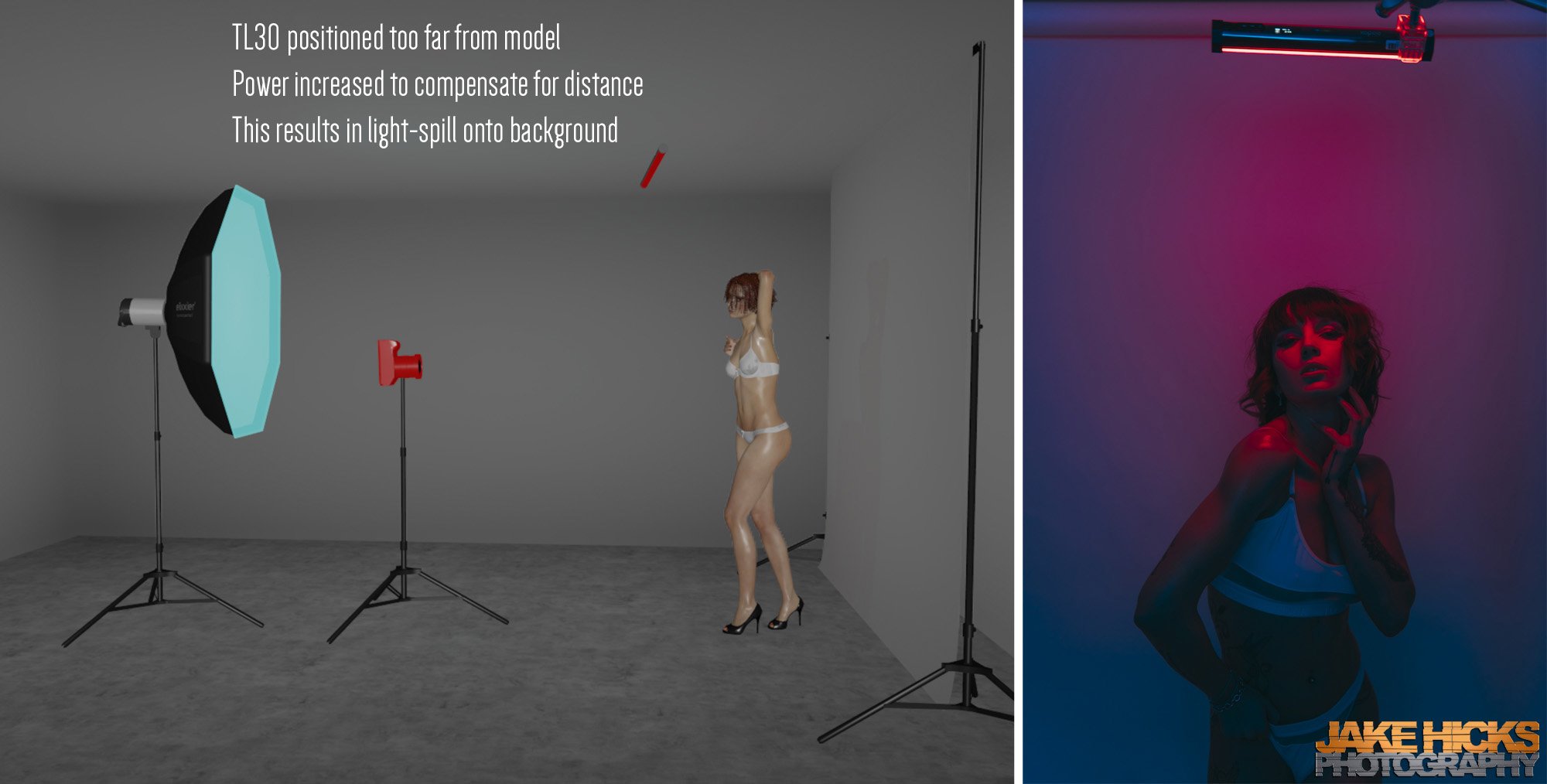
Featured Model: Little_b1989
Light Spread
It’s also worth noting the effective illumination angle of these TL30 tubes is about 180 degrees. I also own some 100cm LED tubes and always use those lights ‘in-shot’. and you can see the results here, but see how those tubes seemingly spread light from everywhere? That is very different to these TL30s as the angle of light spread is closer to 180 degrees rather than the 360 degrees you see in those other images. This is not a problem as I never intend to use these TL30s in-shot as I do with my longer tubes, but I just want you to be mindful of that in case you were planning to use them in-shot yourself.

Click to enlarge: I’ll speak about this later in the article, but LED lights are often about the right tool for the right job. Yes, those tubes throw light in all directions, but that also gives you far less control of your light too. The 180 spread of the TL30 ensures the light goes only where you want it.
Final Thoughts on the TL30-(K2)
At this stage, I think you’ve likely made up your mind with regards to this little light, my only hope is that your decision wasn’t purely based on the power output alone. Is it a ‘powerful’ light? No, but it’s more than powerful enough for the job it’s trying to do. I got this LED tube to illuminate small areas of the body with clean-looking light and to do it with precision. I had hoped that’s what it would do and thankfully it did it extremely well.
If you’re still on the fence, then here are a few bullet points to help you out.
-
Full RGB Colour Spectrum - As you’d expect, truly more colours than you’d ever need.
-
Detailed Saturation Adjustments - Bold colour not your thing? Don’t forget that this light also has a saturation dial for all colours and its increments are as small as 1%!
-
Kelvin Adjustments - This isn’t the biggest Kelvin range at 2700K-6500K, but it has enough adjustability for most needs.
-
G/M Tint Shifts - The Kelvin mode also allows for Green and Magenta shifts which is ideal if you’re ever matching lights to fluorescents.
-
Video Effects - I don’t even use these, but I know a lot of videographers that do. If you need a flickering fire or TV lighting effect for a video, this light has tons to choose from too.
-
Very Easy to Use - With just 3 buttons and a dial, this light is very simple and quick to use. Plus, with only 3 modes to cycle through, you won’t be wasting time trying to find what you want either.
-
Useful Accessories - Most of the time, these kits contain fillers to simply try and add value, but this kit really does contain some very useful accessories. Among them are the light-stand clamp, grid and even the waterproof bag.

LEDs are more flexible than you think. Sure, you’ll need to adapt your thinking from years of strobe use, but the effort will be rewarded with a better quality of light. Plus, there are certain instances where LEDs can offer something unique. In this image, the red light is coming from the little TL30 we’ve been discussing. See how the light is going both up and down the model thanks to its tube shape?
Closing Comments
If you’ve read all this nerd-speak so far, you likely think I’ve lost my mind. I get it. I really am getting into the weeds of understanding the dynamics of light drop-off with this one and for the most part, you’ll be able to take a lifetime's worth of portraits and never need to know all of this. But for those of you who want to dig a little deeper and for those who want to control complex lighting AKA coloured lighting in small areas like the human body, understanding lighting drop-offs based on the size of the light source and not simply via the Inverse Square Law, will certainly help you to achieve that.
A different chapter
Understanding and mastering LEDs is a very different chapter in the broader book of lighting knowledge. Yes, many things are the same, but the more I use LEDs the more I realise there are aspects of lighting that I’ve simply always taken for granted or simply overlooked until now.
This isn’t a new problem either as I went through a similar rediscovery when I transitioned to flash from hot-lights. All of these lights are like instruments. The notes stay the same, but you need to learn the intricacies of each instrument as you move around them.
Understanding the difference between points and planes of light
As I stated earlier, I’ve used flash extensively over the years and due to its design, flash nearly always emanates from a single point. From here we modify that single point in a variety of ways, from a large soft-box to a hard snoot. The resulting light is fine, but soft-boxes can produce hot-spots and the channelled and bounced light of a snoot can cause rough and even double shadows. Flashes are fine, but they are jack-of-all-trades-master-of-none when it comes to lighting and that’s absolutely fine for the most part. After all, you can very happily take many amazing images with flash, it’s just that when trying to do very precise lighting with colour, flashes can be tricky to fully manipulate.
LEDs are far from perfect though and the biggest most obvious flaw of LEDs is that they’re almost impossible to modify. The shape of the LEDs, whether it be a panel or a tube, is the shape of the light you’ll get. No lighting modifier can turn an LED panel into a viable snoot. But this lack of flexibility means the quality of light you get from that panel or tube if used as such, is truly remarkable.
Quality vs power
These little LED tubes won’t outright replace any of your strobes as they simply don’t do anything that your strobe already does. But your strobe also cannot do what this little light can do either.
I think as the years go by, LEDs will get brighter and brighter and for many, only then will they dare to even try LEDs. But like it or not, I really do see us switching to LEDs and as we do so, we’ll have to remember that it’s the right tool for the right job. One LED light won’t be as versatile as one strobe, but using the right LED for the right job will always produce gorgeous results and those will always speak for themselves.
Your thoughts?
As always, I truly appreciate anyone who reads all of my nerdy articles. Hopefully, you’ve learned something new or even better you’ve been inspired to test your own theories and ideas on this. If you do, I’d love to see or hear about them and always feel free to share your work via my Facebook Pages -Share-a-Shoot- post every Monday. Although the calibre of work being shared on there now is so high, I’m starting to feel pressured…. which is never/probably isn’t a bad thing!"
This blog has been provided for use on the EssentialPhoto & Video website by Jake Hicks. Check out Jake's website here, or, if you have any questions about the equipment featured, please contact our team at info@essentialphoto.co.uk.

